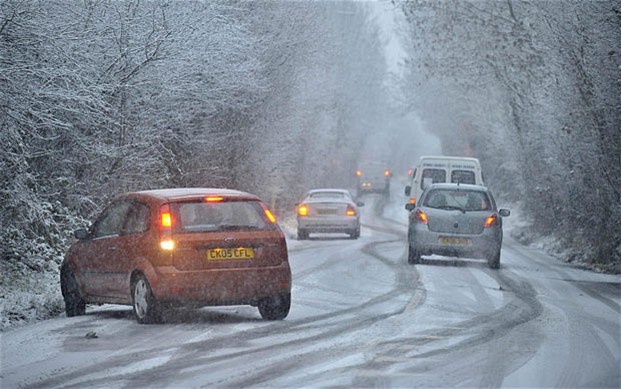Tips for Traveling Safely
Winter Driving Safety
Driving safely in winter weather can be a challenge for even the most experienced driver. It’s easy to forget after months of mild conditions that snow and ice demand careful driving and special preparation for your vehicle. But when 17 percent of all vehicle crashes occur during winter conditions it’s clear that we could all use a refresher when it comes to making our way through a winter wonderland.*
Ready Your Vehicle
Driving safely begins before you even get on the road. Regular tune-ups and maintenance are the starting point for safe driving year-round. In winter, pay special attention to your vehicle’s battery, wipers, coolant, tires and other systems that can take a beating when the temperature drops. If you’re using snow tires, have them installed before the snow begins to fall. When you know your vehicle is ready for the road, clear your car of snow, ice or dirt from the windows, forward sensors, headlights, tail lights and backup camera.
Ready Yourself
Drive slowly. It’s harder to control or stop your vehicle on a slick or snow-covered road. Increase your following distance enough so that you’ll have plenty of time to stop for vehicles ahead of you. Also remember that every vehicle handles differently; this is particularly true when driving on wet, icy, or snowy roads. Take the time to learn how it handles under winter weather driving conditions. Before heading out, know the weather and traffic conditions, and plan your route accordingly. Give yourself more time to get where you’re going because you’ll be driving more slowly in inclement weather.
Ready for an Emergency
Even if you and your vehicle are prepared, crashes happen. Vehicles break down. Any of us can get caught out in the elements and help might not be just around the corner. Make sure your vehicle is stocked to help get you out of trouble or to keep you safe until help arrives. Keep blankets, flashlights, jumper cables, and flares or emergency lights in your vehicle. Even if you don’t need them, they can be used to help someone else in need on the road.
Safe Driving: Rain, Sleet, Snow or Otherwise
Winter driving demands special care; safe driving is a year-round habit. You and everyone in your vehicle should be wearing seat belts for every ride. Children should be in age- and size-appropriate child seats. Never drive after drinking. Never drive when distracted by an electronic device or anything else. Those are the essentials for safe driving, whatever the weather.
More Winter Driving Tips
There’s a lot that goes into preparing yourself and your vehicle for winter, so check out NHTSA’s Winter Driving Tips to ensure safe travels.
